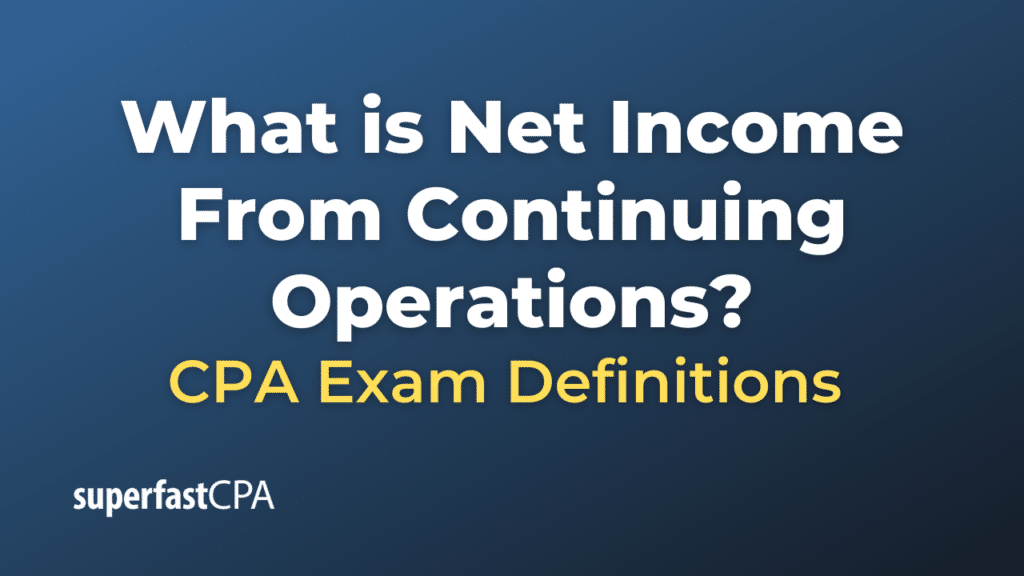Net Income From Continuing Operations
“Net income from continuing operations” refers to the profit a company generates from its normal, ongoing business activities, excluding any income or expenses from non-continuous operations or other unusual items.
In other words, it’s the net income earned solely from a company’s core operations, not taking into account any one-off, unusual, or irregular transactions. This can include things like profits or losses from the sale of assets, the costs of restructuring, or the effects of any discontinued operations.
The “net income from continuing operations” is a crucial measure as it helps investors, creditors, and other stakeholders to understand how much income the company is likely to generate in the future from its regular operations. Non-continuous operations, by their nature, are less likely to recur in future periods, so they’re excluded to give a clearer picture of the company’s ongoing profitability.
The calculation for net income from continuing operations is:
Net Income From Continuing Operations = Gross Profit – Operating Expenses – Other Expenses & Losses + Other Revenues & Gains – Taxes
where:
- Gross Profit is the difference between total revenue and the cost of goods sold.
- Operating Expenses are the costs associated with running the business (rent, salaries, utilities, etc.)
- Other Expenses & Losses are the non-operating costs such as interest paid.
- Other Revenues & Gains are the non-operating incomes such as interest received.
- Taxes are the income tax expenses.
The result excludes income or loss from non-continuing operations, extraordinary items, and the effect of changes in accounting principles.
Example of Net Income From Continuing Operations
Let’s continue with our hypothetical business, “Blue Jay Clothing,” and add a few more details. Here’s a simplified version of their financial report for a given year:
- Total Revenue (income from selling products): $500,000
- Cost of Goods Sold (money spent to make the products): $150,000
- Operating Expenses (rent, salaries, utilities, etc.): $200,000
- Other Expenses (unexpected costs, such as repair fees): $10,000
- Interest (from business loans or other debt): $15,000
- Taxes: $40,000
- Income from selling a piece of land (non-continuous operation): $50,000
To calculate the net income from continuing operations, we do not consider the income from the sale of land since this is a non-continuous operation.
Net Income From Continuing Operations = Revenue – Cost of Goods Sold – Operating Expenses – Other Expenses – Interest – Taxes
Substituting in the given values:
Net Income From Continuing Operations = $500,000 – $150,000 – $200,000 – $10,000 – $15,000 – $40,000 = $85,000
So, Blue Jay Clothing’s net income from continuing operations for this year is $85,000. This is the income generated solely from the company’s main, ongoing business activities.
Note that if we were calculating total net income (including non-continuous operations), the income from the sale of the land would be added, making the total net income $135,000. But this additional $50,000 is not included in the net income from continuing operations because it does not represent income from the company’s core operations.













